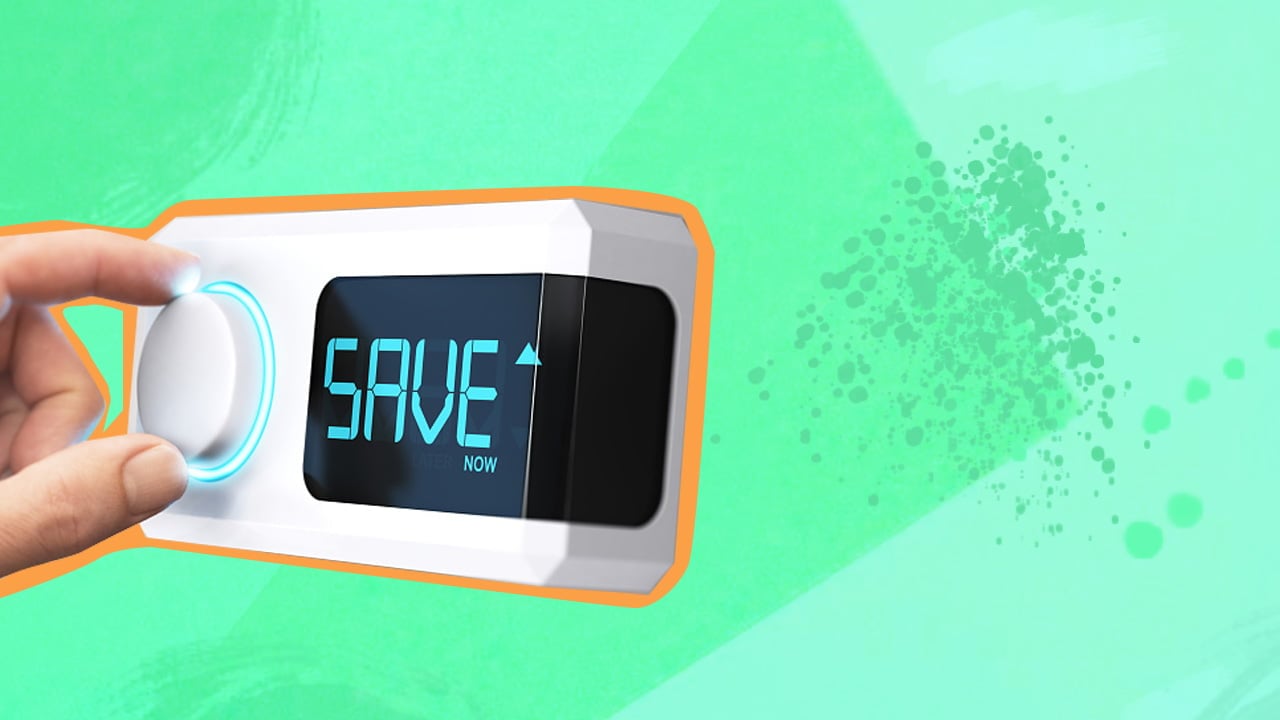Simple Air Conditioner Efficiency Tips For A Lower Bill
The ways to make an air conditioner more energy efficient are several, involving steps like ductwork upgrades and ceiling fan installations. However, simple steps like regular maintenance and keeping curtains closed matter more in the long run to save money on utility bills. Air conditioners can consume a lot of energy, and during the summer […]

The ways to make an air conditioner more energy efficient are several, involving steps like ductwork upgrades and ceiling fan installations. However, simple steps like regular maintenance and keeping curtains closed matter more in the long run to save money on utility bills.
Air conditioners can consume a lot of energy, and during the summer heat, your electricity bills can shoot up high enough to cause worry.
Luckily, there are several easy tips and tricks that you can perform to improve your air conditioner efficiency and reduce the financial load. These range from maintenance and servicing to simple lifestyle changes.
So, let’s take a look at a few ways to improve your air conditioner efficiency and save up on energy expenses.
12 Air Conditioner Efficiency Tips To Reduce Energy Bills

1. Have Your Air Conditioner Serviced
Air conditioner units have several complex parts that make them work, and if any of them are faulty, it can lead to higher energy consumption. There’s nothing worse than the air conditioner malfunctioning during a heat wave in summer months, and a poorly serviced AC will be prone to working incorrectly.
Be sure to make regular service calls for air conditioner repairs or cleaning air filters. The frequency of this needn’t be more than once a year, and by having your AC serviced, you will see a marked improvement in its performance. A well-performing air conditioner will consume just enough power to cool your room without any signs of slowing down.
2. Outdoor AC Unit Maintenance
It’s important to note that the outdoor unit for split ACs requires just as much attention as the indoor unit. Having the outdoor unit cleaned can add years to the lifespan of the home appliance while improving its efficiency as well.
Additionally, the area surrounding an outdoor unit can have trees and debris blocking the vent, which can lead to a host of issues. Keeping this area clear will help your air conditioner unit work properly. Simply rake away the shrubbery and dust once a few weeks, and you’re done.
This is a step exclusive to larger air conditioners such as wall-hung or mini-split air conditioners. By virtue of including all the functional components in a single unit, portable air conditioners require no outdoor units and thus, require no outdoor maintenance.
3. Insulate Your Walls And Attic
Insulation can do wonders for the efficiency of your portable air conditioner by helping to trap cold air during summer. Once the air inside a room remains cool, the air conditioner doesn’t have to consume as much power to keep it cool. And considering the fact that ACs consume the most power during summers, insulation can help reduce energy bills.
Not only that, but insulation is also beneficial for trapping warm air during winters with no warm air escaping outside. There are no real downsides to insulating your walls and attic.
4. Upgrade Your Ductwork
Central air conditioning systems use a network of ducts to keep the whole house cool. If the ductwork of such air conditioners is exposed, the cold air inside them can quickly become warm before it reaches the desired room. This can render the whole point of a central air conditioning system moot.
Insulating your ductwork can help mitigate this issue, making your air conditioning system more cost-effective. This can bring a big difference in the energy bills you receive during the summer.
5. Invest In A Smart Thermostat
Smart thermostats are a great way to reduce your overall air conditioning costs and save up on your electricity bill. These allow you to program schedules for your AC, as well as set it to turn on or off when the room reaches a certain temperature. When you’re away, the programmable thermostat can sense it and signal the air conditioner to either ease up on the cooling or turn off.
Thermostats have been a part of regular households for quite a while, but many people neglect adjusting their thermostats during hot weather. All too often, thermostats are left at the lowest possible temperature setting, which causes them to run continuously. This issue is completely resolved by using a programmable thermostat after a one-time setting adjustment.
6. Keep The Curtains Closed
Warmth from direct sunlight can reduce how effectively an air conditioner cools a room down. The fact that blocking the sun can help cool the room down is something that may fly under people’s radars.
Optimizing your ambient temperature by limiting the sunlight is as simple as drawing your curtains, window blinds and solar screens. This will have your home cool down significantly more quickly, and consequently, your air conditioner will not have to work as hard.
7. Avoid Using Heat-Inducing Appliances
Cooking stoves, ovens, dishwashers, and the like produce a lot of heat, which can reduce the effectiveness of your air conditioner. The air conditioner has to compensate for the added heat and consumes more power as a result, adding to your cooling costs. Moreover, running these devices during the day will wear out your AC even further.
It’s always best to schedule your use of such heat-producing devices so that they are in use when the temperature is not as high. This will reduce the workload on your AC system, improving the performance and energy conservation in the process.
8. Invest In Ceiling And Portable Fans
With a ceiling fan in the room, an air conditioner doesn’t have to work as hard to maintain air flow. Once your air conditioner has cooled your room down, consider turning it off and using a ceiling fan instead. Or, if you have a portable air conditioner, you can switch to its fan mode as well.
Along with portable fans, ceiling fans consume less energy, saving up to 40% of the air conditioning bill. The only real caveat with portable fans is that you have to worry about positioning them well.
Tip
When installing a smart ceiling fan, it’s important to ensure that the blades are angled to push air downwards. There’s no use for a fan that throws air upwards and away from the user, is there?
9. Planting Trees Around Your House
The principle behind using trees for your home is similar to that of curtains in that they block a lot of warmth produced by direct sunlight. Only difference is, trees are of a larger scale than curtains.
If you have an attic, there are very few ways of keeping the crawlspace from becoming the warmest part of your home. Of course, this makes trees a permanent solution to this problem, providing your attic with much-needed shade and blocking out the UV rays.
It’s important to remember that you won’t see immediate benefits in your energy bill, as trees are very much a long-term solution. According to the United States Department of Energy, trees can improve the efficiency of your air conditioner by up to 10%, which is a sizable amount.
Tip
Consider planting birch or red maple trees, should you opt to use this as your solution. These provide enough shade to cover a good portion of your home, making them a viable long-term solution.
10. Correctly Place Your Thermostat
Thermostat placement can be the deciding factor in how well your Heating, Ventilation, and Air Conditioning, or HVAC system works. By placing it on the right wall in your home, you can make sure that the cooling system doesn’t activate too frequently or too sparsely.
For instance, if you place the thermostat on a wall that receives heat through factors like solar exposure, the battery-powered AC will turn on frequently. On the other hand, if the device is placed somewhere that remains constantly cold, the thermostat may not turn the AC on when needed.
To make sure neither of these instances occurs, you may place the thermostat on a centralized wall that is a few paces away from the windows.
11. Close Off Leakage Points
Cold air can leak through openings left in your home, no matter how small. The biggest culprits of this issue are cracks and openings in doors and windows, allowing cool air to escape through. Additionally, the foundations of your home, where the meeting point of brick and siding is, can cause cool air to leak.
The best way to ensure there are no leaking points is to have a professional perform an energy audit. These audits will give you a complete picture of the state of the home and its energy efficiency, giving you room for optimization. Consider using caulk or similar sealant to close off these leakage points.
12. Pick The Correct AC Size
If you’re looking to purchase a new air conditioning unit, choosing one that is sized correctly can save money on utility bills. An AC unit that is too small for a room will have to work harder to maintain its temperature. On the other hand, a cooling unit that is too large will consume too much power to condition the space properly.
You can gauge if your future AC is of the right size or not by looking at its BTU (British Thermal Unit) rating. Every AC receives a BTU rating that increases by a factor of 20 for every square foot of living space. A 2,000 BTU air conditioner can cool a space of 100 square feet well, while larger rooms can require more than 20,000 BTUs.
The rating also increases with the size and weight of the air conditioning unit, in addition to the size of the room. Thus, the energy consumption of larger air conditioners increases as well. The energy consumption also varies based on the height of the ceiling, solar exposure, and heat-producing appliances in the room. You can look at the energy star rating for gauging energy consumption as well.

Conclusion
There is virtually no end to how you can optimize your air conditioner’s energy consumption. The ones listed above are just a few of the simple ones, and if you’re up for it, you can opt for more involved steps. Installing solar panels is one such intricate step for energy efficient use.
In most cases, the smaller and less intricate options are all that matter. These small steps add up and eventually, you’ll be looking at energy savings in the thousands of dollars. It’s all just a matter of keeping up these small habits. Balancing comfort with cost-effectiveness is always a wise step, and you can save money by starting with the air conditioner.
If you found this guide insightful, consider checking out our review of the Zero Breeze Mark II portable air conditioner.
